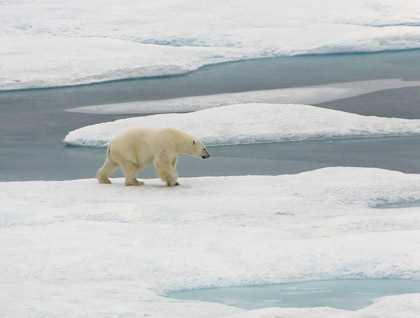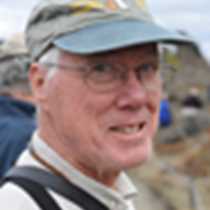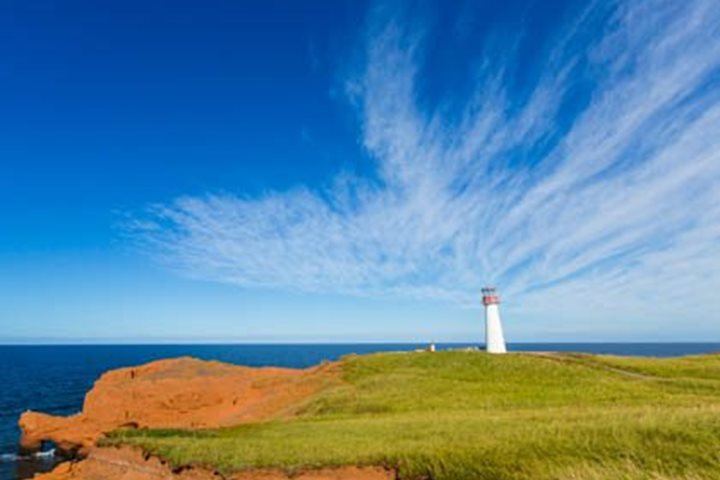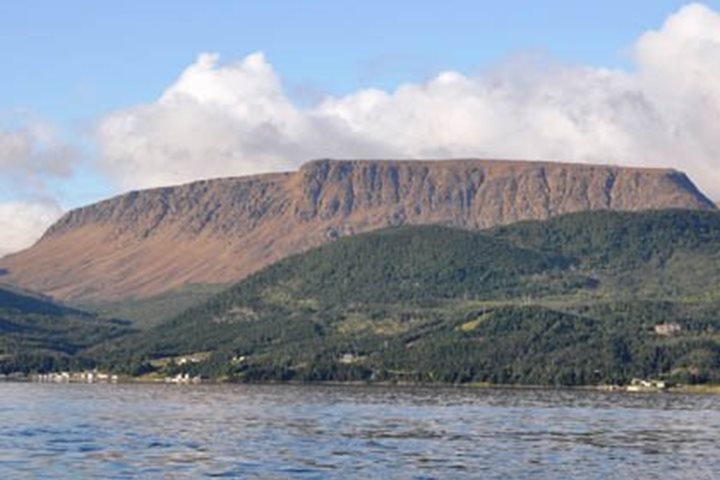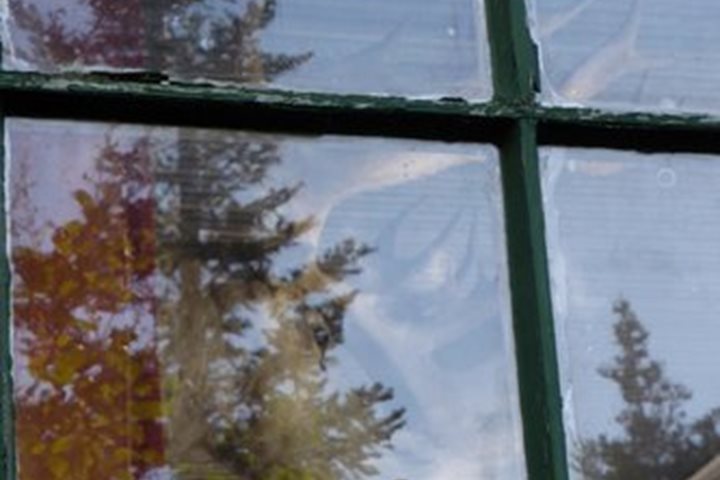The morning wake-up call came earlier than expected, but a call that includes the words "polar bear" and "ice floe" will rouse us from our slumber. We groped for our warm clothing. We had moved northward during the night, along the east coast of Ellesmere Island. In the early morning we encountered a patch of "polar bear ice," the mixture of first-year and multi-year sea ice the is the preferred habitat of the ice bears. Our binoculars seek out any small ivory-colored dot on an otherwise white ice surface. We strain to see the dot move. Yes, it is a bear, spotted at a considerable distance. We approach, ever so slowly, stalking the polar bear much as the bear stalks seals on the ice.
As the strange, dark object that is our ship approaches, the bear rises but it does not flee. Polar bears have no experience and no evolutionary history with anything larger than themselves, except another polar bear, and we are definitely not another polar bear. Our bear shows signs of conflicting urges or behavioral drives – to approach and satisfy its curiosity or to avoid this large, strange object. Collectively, we hold our breath in anticipation. Finally, it does approach with a slow, pigeon-toed, ambling gait. Our bear is a male, with ears set well down on the head and long guard hairs on the front legs. Cameras click, no doubt audible to the bear. The approach, withdraw conflict, is evident in his behavior. Then, apparently satisfied that we offer nothing to eat, he ambles off. We watch him make a rush at two seals resting on the ice, but they quickly disappear into the water. It may take him two or three days of hunting to succeed in making a kill, but that is enough to maintain the store of body fat that is so evident in his rotund belly and so crucial to his survival.
Our next encounter was a female with two cubs of the year feeding on a recent kill. Perhaps it was a bearded seal. A trail of blood led from the water's edge to the jumbled ice of a pressure ridge where the mother had stashed the seal. Ivory and glaucous gulls were there to feed on the scraps. We watched through a snowstorm, and then left them undisturbed.
We entered Bachanan Bay, and turned into Alexandra Fjord to reach the area of Skraeling Island. ("Skraeling" is the word that the Norse settlers of Greenland used for the Inuit.) This is the site of an important archaeological find. Norse artifacts show that the Norse traded with the natives here on Ellesmere Island, far north of their settlements on Greenland. Quite unexpectedly, above our landing, we found the remains of a summer encampment of natives, we think of the Thule Culture (the third of the three Inuit cultures to occupy this area.) We saw rings of stones that held down the edges of skin tents against the wind, and stone chambers that might have been constructed for storage. Perhaps the Inuit camped at this very site as they traded with the Norsemen, exchanging skins and walrus ivory for European goods, especially metal.
The northernmost landing of our voyage seemed like a fine place for a "polar plunge," and fifteen of our shipmates seized the opportunity to cast themselves into the cold Arctic Sea.
Following dinner, as the sky cleared to the west, we could see the coast of Greenland only thirty nautical miles away across the ice-dotted Baffin Bay. Movie cancelled, and off to the west we went. Ice chunks of all sizes reflected off a glassy smooth sea. We then deviated to attain our northernmost point at 79° North latitude. We were only 660 nautical miles from the North Pole. It was a magical evening that captured the spirit of expedition travel, made even more memorable when we encountered a group of narwhals.

